Authors: Tomáš Petrus, Jiří Janyška | Last change: 1.6. 2016
Presentation
The results and experiences from the pilot operation of CESNET Data Services were presented at the seminar for IT department heads and administrators on 14.5.2015. Case studies from the KRNAP and YCG groups on the use of CESNET Data Services were also presented at the seminar. Participants expressed interest in further involvement in the project through discussions and a survey.
Case Studies
 YCG (Yeast Colony Group)
YCG (Yeast Colony Group)
A well-established research group under the Department of Genetics and Microbiology at the Faculty of Science, Charles University, and recently also part of the BIOCEV project, has been engaged in the genetics, morphology, growth dynamics, and other aspects of yeasts for a long time. They generate significant data, such as high-resolution microscope images and genomic data. They use CESNET Data Services as a shared space for data management and, due to specific access rights requirements, access the data indirectly via the faculty's virtual server.
KAGIK + Data from KRNAP
The Department of Applied Geoinformatics and Cartography processes scientific data (orthophotos, hyperspectral AISA and APEX data, digital elevation models) from the Krkonošsko National Park. The data were initially stored on physical media (HDD), making their transfer and processing very cumbersome. Within the CESNET Data Services, a group was created, and data from the HDDs were copied. The total volume is about 15TB.
Annotations of Other Projects
Data from the Laboratory of Cytogenetics of Arachnids
Due to insufficient capacity of their existing NAS, staff from the Department of Zoology needed to solve the storage of production data from microscopes and the sharing of literature within the research group of arachnid biology. A group for sharing data in CESNET Data Services was created. Filezilla was chosen as the communication program, and SFTP protocol was used due to the requirement to maintain file creation dates.
Backup of Data from the Laboratory of Confocal and Fluorescence Microscopy (LKFM)
This project is similar to the Arachnid Cytogenetics Laboratory, where the requirement was to store and back up data from a confocal microscope. This was again solved by creating a group in CESNET Data Services and access via Filezilla.
Map Collection
This is essentially a specialized library with all the related requirements for the professional value, quality, and scope of the managed items. The Faculty of Science's map collection stores high-resolution scans of maps and other historical materials in CESNET Data Services. A significant portion of these data is made available to the public through a specialized map server.
Geography Library
Libraries are typical representatives of departments that manage highly valuable and large-scale data. The Geography Library moved its electronic archive containing a large number of various materials in digital form to CESNET Data Services.
Multimedia Data Archive
Prof. Flegr from the Department of Philosophy and History of Natural Sciences requested the possibility of archiving records from the Biological Thursdays lectures and the storage of an archive of photographs by Otto Jírovec and Jiří Bauma. Therefore, two groups were created in CESNET Data Services, and data migration took place.
Herbarium Collections
Through the botanical department Herbarium Collections, the faculty is involved in an international network of digitized herbariums. The base consists of high-resolution scans of real specimens and a database accessible to both experts and the general public. The central database and web servers are located in Austria, and our institution contributed an image server that relies on scans from the Prague collections stored in CESNET Data Services.
As stated in the report by the head of the Herbarium Collections of the Faculty of Science, Charles University, Doc. Patrik Mráz:
“Thanks to very effective collaboration with CIT, the archiving of high-resolution scans of herbarium specimens on CESNET storage was solved... CIT staff, in collaboration with the IT department of the University of Vienna, also ensured the creation of thumbnails and the display of scans of type specimens from our collections through the JACQ system directly from the CESNET server.”
Sequencing Data from the Department of Zoology - EEI Laboratory
Backup and archive of DNA sequencing data from next-generation sequencers. The data are used to describe sequence variability of the studied bird specimens and to study the relationship between sequence and expression variability, as well as to determine the variability of oral and intestinal microbial communities in birds. The research team also participates in the creation of a national genetic bank for animals.





















